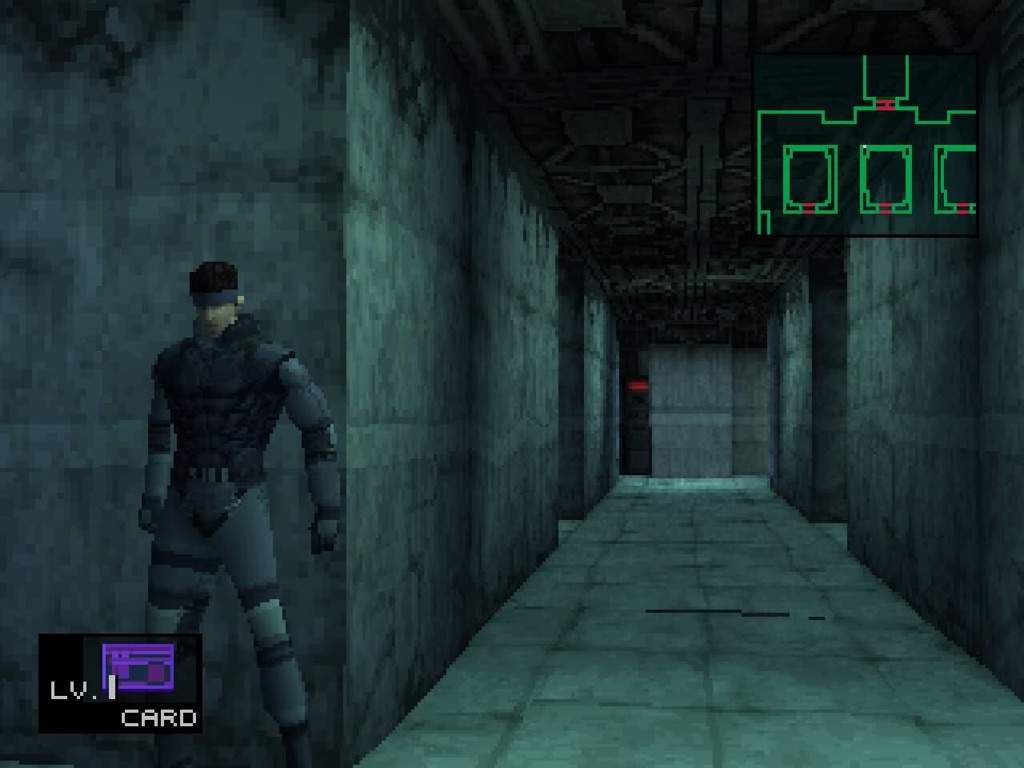It is often said that “the devil is in the details.” In terms of gaming, this cliché is well known, since attention to detail can make or break the success of a game. What is to be said, then, about a game developer that pours most of his efforts into the smallest of details? Someone with ideas like placing the codec number of a vital character on the back of the game case? Someone who dumps hidden references into every area of unused code? Someone who places large attention on things like controller ports and sequences that lead to multiple endings?
I’d imagine such a game developer would recive much praise for his efforts, especially seeing as developer Hideo Kojima poured all of this and more into the seminal Metal Gear Solid, and he indirectly invented a game genre.
Of course, to say that a game was the first of its kind it a bolsterous claim, seeing as though many games deemed innovative actually take inspiration from other games. Certainly, there are other games with similar elements to Metal Gear Solid. The game, however, was the first overhead view action-adventure game where the player was prompted to avoid combat, instead of provoking it.
To be technical, Metal Gear Solid was the first 3d stealth shooter. In the game, you control the titular character, Solid Snake, in completing a series of intense missions that not only involve tactically eliminating any threats in your way, but also avoiding the dection of your presence by others. The player makes use of various weapons in the game to achieve this. Several modern franchises use these mechanics, such as the Batman: Arkham series and Assasin’s Creed.
Among the innovative mechanics, Metal Gear Solid also expertely weaves in a very intricate and compelling plot into the video game. Solid Snake is charged by his Colonel to inflitrate members of his old unit: Fox Hound. They are posted in Shadow Moses Island, a nuclear disarmament facility in Alaska, and they threaten to launch a nuke if their demands are not met. As Snake, you storm the facility to find/stop the nuke, but you quickly realize that the orders you were given were not the full story, but rather a short, skewed account of a larger narrative that you uncover more of as you progress.
Metal Gear Solid provides the player with an enormous amount of freedom. While the game is linear in format, you only sense of navigation is the orders from your Colonel or other aids which you contact by codec, who tell you where to travel next and what to do there. It is left to the imagination of the player to develop a strategy to reach the next checkpoint. The subtitle of the game is Tactical Espionage Action, and it stayes very true to that label. Traveling to your next area is one thing. It is another thing entirely to develop the strategy to avoid detection and the littany of traps that are set for you. Often in the game, the player has the option of taking out the enemies looking for him, or simply hide from their gaze.
In playing this game, you will also be tested. The aids that you can contact, on a consistant basis, will only tell you of the place you need to go. There are rare occasions where they will give you hints during boss fights, but beyond that they really are there to move the plot along. There also isn’t a map of the entire area, only the radar for the area around you that gets jammed for half of the game. The lack of aid, in eliminating obstructions on levels and in the boss fights, end up being very refreshing for the player. You are given a myriad of weapons, and you can choose which one you think will work best in a given situation. For instance, one boss fight prompts you to use a remote controlled missle launcher called the Nikita to win, but the player could incorporate C4 as well for a much more efficient strategy.
One interesting aspect of the game that Kojima incorporated was, while it wasn’t 2d or side-scrolling, Metal Gear Solid feels like a Metroidvania game. The Metroidvania subgenere was made popular by titles like Super Metroid and Castlevania: Symphony of the Night, where instead of traveling to a new area each time, players were required to revisit old areas after they have powered up to uncover new passages that were unaccessible before. An example would be in Metroid games, where Samus can open different doors when she gets different beams/missiles.
In Metal Gear Solid, Snake gets different card keys that are leveled one through six. The level of card he has determines which doors the player can open, as players cannot access rooms with a level door higher than the card they currently hold. This being said, this form of backtracking is very tastefully done. Metroidvania games at times are under attack because players don’t like to revisit areas. In Metal Gear Solid though, the player is usually promted through the story to go back to certain places anyways, so it doesn’t feel like work. You will also desire to backtrack at times because that way you can receive more health/ammo for weapons. It is Metroidvania done right.
The gameplay in Metal Gear Solid is also interrupted by long cutscenes at times, even so that people often call it Metal Gear Solid: the Movie. Kojima made the game so that the cutscenes would enhance the game, though, as supposed to being side material. For it’s time, the game actually has some pretty impressive voice acting, and it does incorporate a story that could be a movie script one day. It can be heavy on a new player, though. If you’re trying to just play the game for the mechanics and ignore the general story, you will find these cutscenes frustrating. If you become interested, though, it is very rewarding. Small things in the game will become monumental, and it connects to every other game in the series. Metal Gear Solid invites you to immerse yourself into the lore, and it serves as a bonus benefit for those who play the game.
As much praise as this game deserves, the difficulty must be mentioned. There are a lot of shenanigans in this game, like trap doors, time bombs randomly stuck on you, multiple enemies in elevators, and things of the like. This game compels many gamers to their knees yelling “Kojima” at the top of their lungs due to their ineptitue to determine why the died for the 25th time. If you approach this game with the spirit of challenge, though, you will be rewarded for it.




